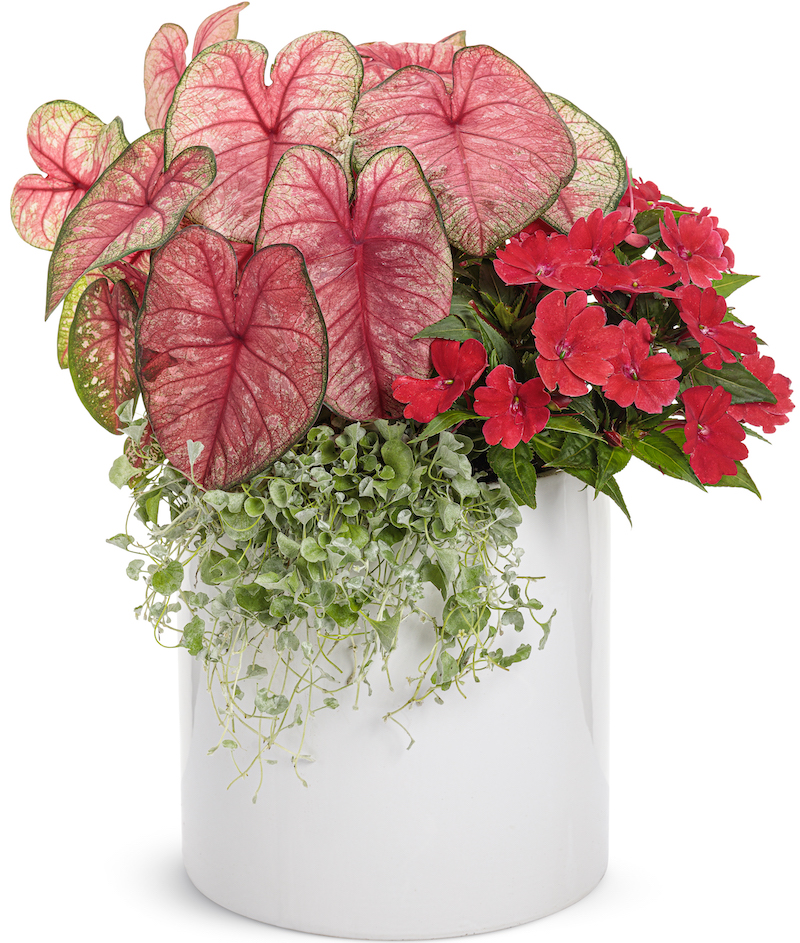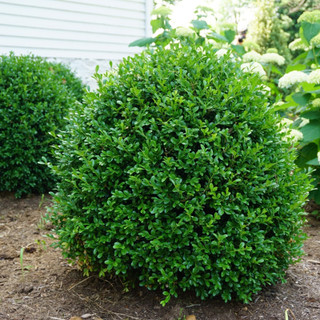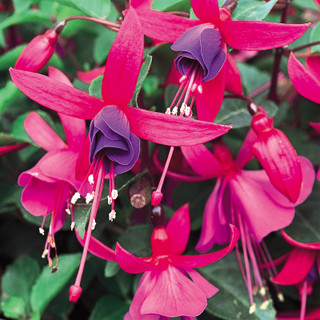Annual plants are great for filling in spaces in the garden, either left from perennial bulbs that finished blooming early in the spring or to temporarily fill in a spot until perennial plants or shrubs reach maturity. Annuals can be changed regularly giving the gardener a chance to try out a new color palette for the season or play with unusual plant combinations. The best annual for any shady or partly shaded spot is Impatiens. They thrive in warm, humid climates and will give you color on even the darkest porch or front step. Impatiens are incredibly easy to grow and require very little maintenance during their long blooming season of May to September.
Combining Impatiens with other plants in the garden is also easy to do. The growing requirements for Impatiens are not different from most other shade-loving plants. Plant Impatiens in well-draining, neutral-to-acidic, moderately fertile soil that remains consistently moist, in partial or full shade depending on how hot your summer temperatures typically are. Impatiens can be used to edge the front of a perennial garden border, cover the ground near shrubs or taller perennials, or serve as a filler element in a container with other seasonal color plants.

Shrubs To Plant With Impatiens
Older homes that have established foundation plantings are sometimes planted with one or two types of evergreen shrubs. Yew, Boxwood, and Holly make a lovely foundation hedging during the winter when no other plants are visible but lack pizzazz during the winter months. The shade from these shrubs is ideal for growing Impatiens during the summer. The shallow roots of Impatiens will not compete for moisture, while the bright colors can brighten a dark space.
Impatiens also pair well with broadleaf evergreens such as Rhododendrons, Azalea, and Daphne. These shrubs all bloom very early, but have interesting foliage that can be used as a backdrop to highlight bedding plants such as Impatiens. The most traditional shrubs to pair with Impatiens are Hydrangeas of all types. Both plants enjoy the same growing conditions of shade and moist, well-draining soil, and have long-lasting blooms. Select Impatiens either to complement or highlight your Hydrangea flower color.
Perennials To Plant With Impatiens
Impatiens and perennials make a great match in the garden. The shortened bloom time of many perennials means that some garden areas can lack color or be completely bare for weeks at a time. Planting Impatiens near early blooming perennials such as Bleeding Heart, Columbine, and most early spring bulbs provides a colorful ground cover that can be left to spread as the plants die back during the heat of the early summer.
Classic shade-loving plants such as Hosta, Fern, and Astilbe are instantly elevated when underplanted with a brightly colored Impatiens plant. Add a slow-release fertilizer to the Impatiens to the planting site. Perennials often do not require ongoing fertilizing through the summer months, and a slow-release or extended-release feed will be enough to support continued growth and blooming.
Annuals To Plant With Impatiens
The easy-going Impatiens can be grown with just about any annual plant that likes to be in more shade than sun. Thankfully there is a wide range of shade-loving annuals with a variety of foliage colors, shapes, and flower colors. Underplant larger annuals such as Fuchsia or Asparagus ferns with Impatiens as a ground cover or filler. Coleus, Begonias, and Caladiums all thrive in shade and have interesting foliage that contrasts with Impatiens. Because Impatiens remain relatively compact and have shallow roots, they can be tucked into many smaller spaces that a perennial would not tolerate. Impatiens can also be planted in very large groups, which may be useful for filling in areas until tropical annuals can reach their mature size at the end of the summer.
Best Companion Plants For Impatiens in Containers
Impatiens are great filler plants for container growing. They remain compact and do not aggressively push other plants out of the way. Combine a stately Elephant Ear bulb or Caladium (the thriller element) with Impatiens (the filler element) and Asparagus Fern (the spiller element) for a slightly tropical and very long-lasting mixed seasonal planter. The only two points to remember when combining plants for a container display are that all plants need to enjoy the same amount of moisture and have the same light requirements.

Plants Not To Grow With Impatiens
Only a few Impatiens varieties can grow well with plants that are full sun lovers. New Guinea Impatiens are one type and like part to full sun, but need partial shade during the hottest time of the day. Most Impatiens are not good matches for meadow plants such as Echinacea or Ornamental Grasses. They need far too much sun and far less water than Impatiens can tolerate to grow well. Extra watering may be needed when Impatiens are planted in dry shade spots, such as under established trees and shrubs. Use 2-3 inches of organic material for mulching around the root system of the Impatiens. This will help to keep moisture in the soil longer and suppress weed growth.
Best Plants To Grow With Impatiens
Choose plants with the same growing needs when planning a garden bed or container including Impatiens. A shady or partly shaded location, well-draining but moist soil, and moderately rich soil will ensure growing success with minimal effort.
 |
Author Robbin Small - Published 8-28-2023 |




